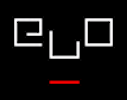Your cart is currently empty!
New E-Lit
-
New Elit in Hyperrhiz 04
The newest edition of Hyperrhiz: New Media Cultures is now online. This issue, which focuses on electronic literature, features work from Thom Swiss Mark Marino Braxton Soderman Stephanie Strickland and… Read more.
-
Grand Text Auto — Exhibition, Symposium, and Performance
October 4th and 5th, at UC Irvine, an exhibition opening, symposium, and performance features the work of ELO Vice-Presidents Noah Wardrip-Fruin and Nick Montfort and ELO Co-Founder Scott Rettberg. EXHIBITION:… Read more.
-
Dr. Zhivago Returns
Jena Osman’s “The Periodic Table As Assembled by Dr. Zhivago, Oculist” was mentioned recently on the ELO site as a work in need of renovation; Osman was seeking a programmer… Read more.
-
Logozoa – the birth of textual organisms
ELO board member, Robert Kendall, is currently working on an exciting new project that seeks “to disrupt the conventional role of words in their day-to-day life.” Keep your eyes open… Read more.
-
1001 Nights Cast: A Durational Performance
ELO member Barbara Campbell recently passed the one year benchmark in her performance/writing project 1001 nights cast. Campbell’s first webcast was performed from Paris on June 21st, 2005 and continues… Read more.
-
ETC “Prosthetic Imagination” for Poetry is Online
Erica T. Carter (the Electronic Text Composition project) now has a home page. Users can generate poetry with the system Jim Carpenter has presented at the Slought Foundation, as part… Read more.
-
A New Interactive Fiction Trio, in Inform 7
As announced on Usenet, three pieces of interactive fiction have just been released. All are written in Inform 7, the soon-to-be-released IF development system from the creator of the original,… Read more.
-
Shifting Stories in “23,040 Bridges”
Adam Cadre’s “23,040 Bridges” provides a combinatoric explosion of different stories, asking the reader to rank how culpable each of five characters is in the death of the main character.… Read more.
-
Interactive Fiction Competition Wraps Up, Covered in The Wall Street Journal
This year’s Interactive Fiction Competition, the 11th annual “comp,” was won by Jason Devlin’s Vespers. There was a tie for second place between Beyond, a game by Italian authors Roberto… Read more.
